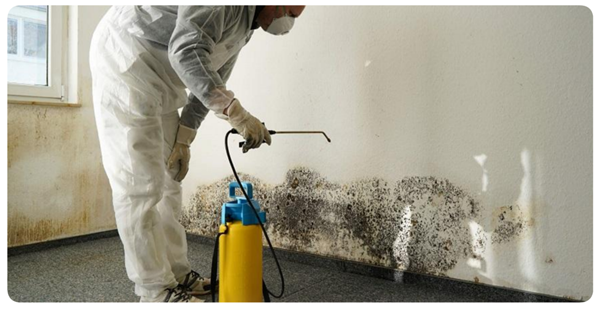Keeping Kids Safe and Stylish: The Ultimate Guide to Safety Sunglasses for Kids
Introduction
When it comes to protecting our children, we often focus on sunscreen, helmets, and car seats. However, one essential protective item that’s frequently overlooked is sunglasses. Safety sunglasses for kids are not just a fashion statement; they are crucial for shielding young eyes from harmful UV rays, debris, and other potential hazards. This comprehensive guide delves into why safety sunglasses are important, what to look for when buying them, and how to ensure your kids actually wear them.
Importance of Safety Sunglasses for Kids
Protecting Against UV Rays
Children’s eyes are particularly vulnerable to ultraviolet (UV) radiation. Unlike adults, the lenses in children’s eyes are clearer, allowing more UV radiation to reach the retina. Prolonged exposure to UV rays can lead to serious eye conditions such as cataracts and macular degeneration later in life. By ensuring your kids wear UV-protective sunglasses, you significantly reduce their risk of these long-term issues.
Preventing Eye Injuries
Kids are often engaged in active play, sports, and outdoor activities, where the risk of eye injuries is higher. Safety sunglasses can protect against impacts from flying objects, dust, and debris. Look for sunglasses that meet ANSI Z87.1 standards for impact resistance to ensure optimal protection.
Enhancing Visual Comfort
Bright sunlight can cause discomfort and squinting, which may lead to headaches and eye strain. Sunglasses with appropriate tinting and polarization can reduce glare and enhance visual comfort, making outdoor activities more enjoyable for children.
Understanding UV Radiation
Types of UV Rays
UV radiation is divided into three types: UVA, UVB, and UVC. While UVC rays are absorbed by the Earth’s atmosphere and do not pose a threat, UVA and UVB rays can cause significant damage to the eyes and skin. UVA rays penetrate deeper into the eye, while UVB rays are primarily responsible for surface damage.
Effects on Eyes
Exposure to UV rays can lead to various eye problems, including photokeratitis (a painful sunburn of the cornea), pterygium (a growth on the eye surface), and even cancer. Ensuring your child’s sunglasses block 100% of both UVA and UVB rays is crucial for their long-term eye health.
Key Features of Quality Sunglasses
UV Protection
The primary function of sunglasses is to block harmful UV rays. Look for labels that indicate 100% UV protection or UV400, which blocks both UVA and UVB rays.
Impact Resistance
Children’s sunglasses should be durable and capable of withstanding the rigors of play. Polycarbonate lenses are an excellent choice due to their high impact resistance and lightweight nature.
Comfort and Fit
Comfort is key to ensuring children keep their sunglasses on. Choose sunglasses with adjustable nose pads and flexible frames for a snug yet comfortable fit. It’s also important to select the right size to prevent them from slipping off.
Stylish Designs
Kids are more likely to wear sunglasses if they like the way they look. Opt for trendy designs and colors that appeal to your child’s taste to encourage regular use.
How to Choose the Right Sunglasses
Age-appropriate Sizes
Sunglasses should fit well without pinching or falling off. Look for sizes that match your child’s age and head circumference.
Lens Material
Polycarbonate lenses are recommended for children due to their durability and impact resistance. They are also lighter than glass lenses, reducing the risk of discomfort.
Frame Material
Frames should be made of flexible, non-toxic materials. Rubberized frames can provide added comfort and durability.
Polarized vs. Non-Polarized Lenses
Polarized lenses reduce glare from reflective surfaces like water and pavement, enhancing visual comfort and clarity. While more expensive, they can be particularly beneficial for children who spend a lot of time near water or engaging in outdoor sports.
The Best Times for Kids to Wear Sunglasses
Everyday Wear
Children should wear sunglasses whenever they are outdoors, even on cloudy days, as UV rays can penetrate through clouds. Regular use can prevent cumulative damage over time.
During Sports and Outdoor Activities
Activities such as cycling, hiking, and playing at the beach expose kids to higher levels of UV radiation and potential eye injuries. Sunglasses designed for sports can offer additional protection and stability.
On Cloudy Days
Many parents mistakenly believe that sunglasses are only necessary on sunny days. However, UV rays can penetrate cloud cover, so it’s important for kids to wear sunglasses even when it’s overcast.
Getting Kids to Wear Sunglasses
Making It Fun
Choose sunglasses with fun colors and designs that appeal to your child’s interests. Let them pick out their favorite pair to give them a sense of ownership and excitement.
Leading by Example
Children often mimic their parents’ behavior. By wearing sunglasses yourself, you set a positive example and make it more likely that your kids will follow suit.
Educating About Eye Health
Teach your children about the importance of protecting their eyes from the sun. Use simple explanations about how sunglasses can help keep their eyes healthy and strong.
Caring for Your Kids’ Sunglasses
Cleaning and Maintenance
Regularly clean sunglasses with a microfiber cloth and lens cleaner to remove smudges and dirt. Avoid using abrasive materials that can scratch the lenses.
Proper Storage
Store sunglasses in a protective case when not in use to prevent damage. Teach your children to do the same to extend the lifespan of their sunglasses.
When to Replace
Inspect sunglasses regularly for signs of wear and tear. Replace them if the lenses are scratched or if the frames are bent or broken to ensure continuous protection.
Common Myths About Sunglasses
Sunglasses Are Only for Sunny Days
UV rays can penetrate through clouds, so sunglasses should be worn even on overcast days. Consistent use is key to effective eye protection.
Kids Don’t Need Sunglasses
Children’s eyes are more susceptible to UV damage than adults, making sunglasses an essential part of their outdoor gear.
FAQs About Safety Sunglasses for Kids
Why Do Kids Need Sunglasses?
Children need sunglasses to protect their eyes from harmful UV rays and prevent long-term eye health issues. Their developing eyes are more vulnerable to damage from the sun.
How Do I Know if Sunglasses Are UV Protected?
Look for labels indicating 100% UV protection or UV400 on the sunglasses. This ensures they block both UVA and UVB rays effectively.
What Are the Best Sunglasses for Sports?
For sports, choose sunglasses with polycarbonate lenses for impact resistance and a snug fit to stay in place during activity. Polarized lenses can also reduce glare for better visibility.
How Can I Get My Child to Wear Sunglasses?
Make it fun by choosing stylish designs, leading by example, and educating them about the benefits of wearing sunglasses. Positive reinforcement can also help.
Do Babies Need Sunglasses?
Yes, even babies need protection from UV rays. Look for baby sunglasses with soft, adjustable straps and 100% UV protection.
Can Sunglasses Harm My Child’s Eyes?
No, sunglasses designed for kids with proper UV protection and safe materials do not harm their eyes. They offer crucial protection against potential damage.
Conclusion
Safety sunglasses for kids are a vital tool in protecting their eyes from harmful UV rays and injuries. By understanding the importance of UV protection, choosing the right pair, and encouraging consistent use, parents can safeguard their children’s eye health. Invest in quality sunglasses and make wearing them a fun and regular part of your child’s outdoor activities.



